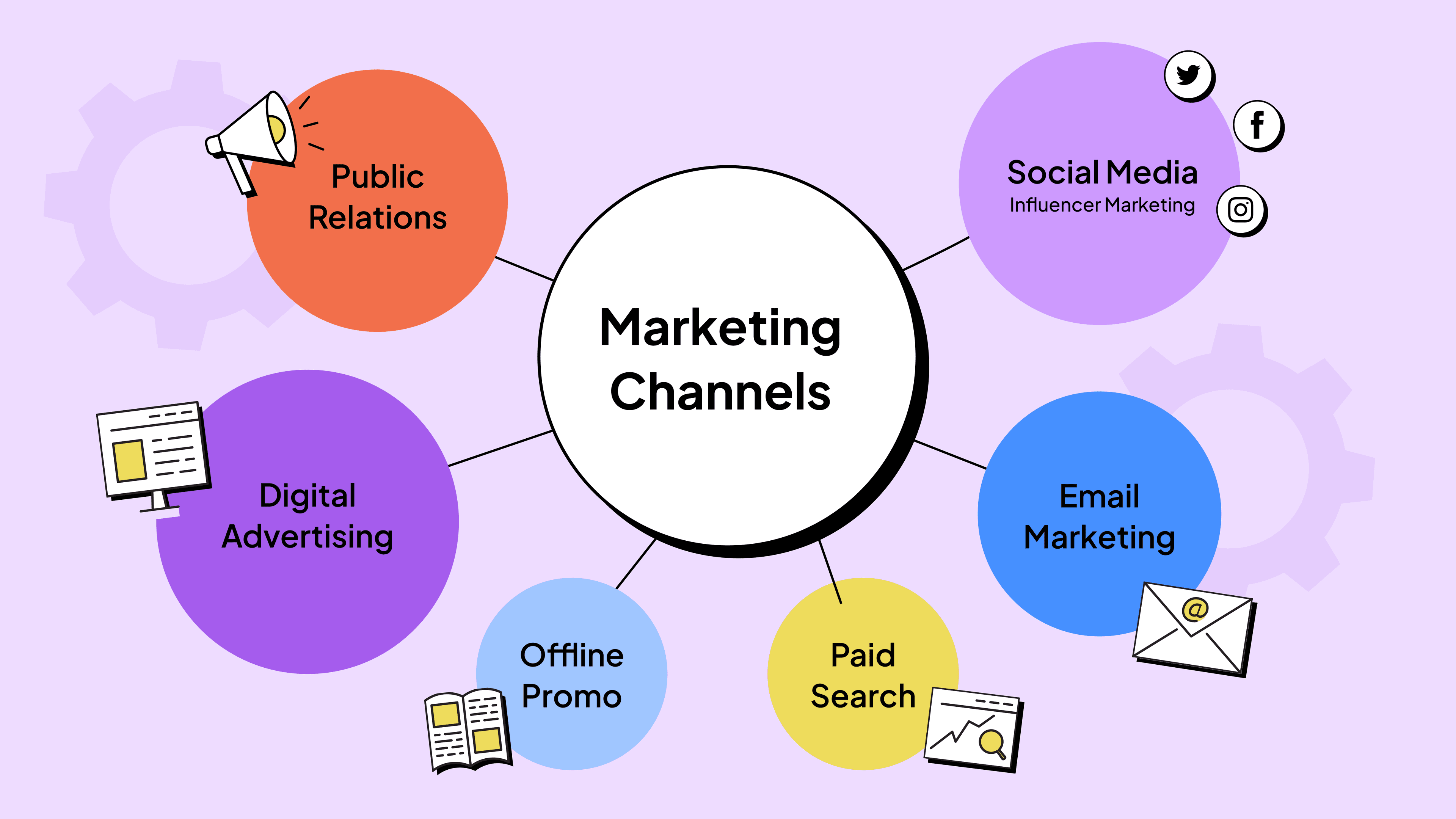The Ultimate Guide to Lead Gen: Strategies, Tools, and Best Practices

In the ever-evolving landscape of digital marketing, mastering the art of lead generation (lead gen) has become essential for businesses aiming to thrive. Lead gen is not just a buzzword but a strategic approach towards attracting and converting strangers into prospects who have indicated interest in your company's products or services. Understanding what lead gen is, and leveraging it effectively, can significantly impact a business's growth trajectory, especially within the B2B lead gen sphere. It's the lifeline that fuels the sales pipeline, ensuring a steady flow of potential customers to nurture and convert.
This article aims to demystify the lead gen process, offering a comprehensive guide on the top strategies, indispensable tools, and best practices essential for success in generating leads. From defining what lead gen entails to exploring the nuances of B2B lead gen, readers will be equipped with the knowledge to craft a lead gen process tailored to their business needs. Whether you're new to the concept or looking to refine your current strategies, this guide will provide valuable insights into optimizing your lead generation efforts for maximum impact.
Defining Lead Generation
What Constitutes a Lead?
A lead is any individual or organization that shows interest in a company's product or service. This interest is typically expressed when they provide contact information after engaging with a marketing initiative, such as filling out a form for an offer, trial, or subscription . There are various types of leads based on how they interact with a business:
- Marketing Qualified Leads (MQLs): These are contacts who have engaged with marketing efforts but are not yet ready to receive a sales call. An example is someone who fills out a form on a landing page .
- Sales Qualified Leads (SQLs): These contacts have taken actions that clearly indicate their interest in becoming paying customers, like asking specific questions about products or services .
- Product Qualified Leads (PQLs): Individuals who have used a product and shown interest in purchasing. This is common in businesses offering trials or freemium models .
- Service Qualified Leads: These are customers who tell service personnel they are interested in an upgrade, prompting a direct connection with sales .
Stages of Lead Generation
Lead generation is a multi-stage process that involves identifying potential customers and nurturing them to the point of purchase . The stages include:
- Defining Goals and KPIs: Setting clear objectives and key performance indicators is crucial in tracking progress and measuring success .
- Targeting the Ideal Customer Profile (ICP): Understanding who is most likely to buy and tailoring marketing efforts to these individuals .
- Content Creation: Developing content that appeals directly to potential leads at different stages of their journey, from awareness through conversion .
- Lead Scoring and Qualification: Collaborating with sales to score leads effectively ensures that only the most promising leads are pursued .
- Tracking and Reporting: Monitoring the effectiveness of lead generation strategies and making adjustments based on performance data .
Lead Scoring
Lead scoring assigns a numerical value to each lead based on their likelihood to purchase, helping prioritize follow-up efforts . This system evaluates leads based on multiple criteria:
- Demographics and Engagement: Points are given for professional information submitted and interactions with the brand online .
- Behavior on Website: Analyzing actions like downloads and page visits helps gage interest. Leads interacting with high-value content, such as pricing pages or demo requests, receive higher scores .
- Email and Social Media Engagement: Open and click-through rates from emails, and interactions on social media platforms, provide insights into a lead's interest level. Engaged leads score higher, making them priorities for follow-up .
By understanding what constitutes a lead and implementing a structured lead generation and scoring process, businesses can effectively attract and convert leads, enhancing their sales pipeline and overall success.
Top Strategies to Generate Leads
Inbound Marketing
Inbound marketing is recognized as a top strategy for lead generation, focusing on attracting customers through relevant and helpful content. Unlike traditional outbound methods, it allows businesses to connect with potential customers who are already interested in their offerings. By integrating SEO, social media engagement, and creating valuable content, companies can draw in leads that are more likely to convert into customers . Additionally, ensuring that marketing and sales teams are aligned can significantly enhance the effectiveness of inbound strategies .
Outbound Marketing
Outbound marketing plays a crucial role in lead generation, particularly in forming a robust pipeline for Account Based Marketing (ABM). It involves proactive outreach such as email campaigns, cold calling, and attending networking events. This strategy is essential for businesses looking to expand their market reach and test new segments. By using targeted content and a multichannel approach, companies can effectively engage potential leads, gather market intelligence, and shorten sales cycles .
Webinars and Events
Webinars and live events are highly effective for generating qualified leads due to their interactive nature. These platforms allow businesses to demonstrate their industry expertise, build trust, and directly engage with the audience. Selecting the right topics and promoting the event through multiple channels are key to maximizing attendance and engagement. Following up post-event is crucial to convert attendees into leads, making webinars a valuable tool for sustained lead generation .
Partnerships
Leveraging partnerships for lead generation can significantly expand a company's reach and enhance credibility. By collaborating with other businesses that share a target audience, companies can access new markets and increase the effectiveness of their lead generation efforts. Establishing clear partnership goals and maintaining open communication are vital for the success of these collaborations. Additionally, using a strategic approach to select and support channel partners can lead to more efficient resource allocation and better lead generation outcomes .
Each of these strategies offers unique benefits and can be tailored to meet the specific needs of a business. By employing a combination of these approaches, companies can create a comprehensive lead generation campaign that drives growth and enhances their market presence.
Tools to Optimize Lead Generation
Marketing Automation Platforms
Marketing automation platforms streamline the lead generation process by automating marketing tasks such as email campaigns, social media posting, and lead nurturing. These platforms help in segmenting audiences, tracking engagement, and scoring leads based on their interactions with the brand. By automating repetitive tasks, businesses can focus more on strategy and content creation, ensuring a consistent flow of qualified leads.
Lead Scoring Tools
Lead scoring tools are essential for prioritizing leads based on their likelihood to convert into customers. They assign scores to leads based on predefined criteria such as demographic information, online behavior, and engagement with marketing materials. This prioritization helps sales teams focus their efforts on leads most likely to close, improving efficiency and increasing conversion rates.
Content Management Systems
Content Management Systems (CMS) are crucial for lead generation as they facilitate the creation, management, and optimization of content. A robust CMS helps in organizing content that attracts and engages potential leads, supports SEO strategies, and integrates with other marketing tools. This integration ensures that content reaches the right audience at the right time, driving lead generation.
Conversion Rate Optimizers
Conversion Rate Optimizers (CRO) tools focus on improving the effectiveness of marketing efforts by increasing the percentage of visitors who complete a desired action. These tools analyze user behavior on websites and test different elements of the web pages to determine what changes will most likely lead to conversions. By continuously optimizing these elements, businesses can significantly enhance their lead generation efforts.
Key Practices for Successful Lead Generation
Consistent Follow-ups
Effective lead generation hinges on consistent follow-up practices. Engaging with potential customers after initial contact is crucial, as it guides them through the sales funnel towards conversion. Marketing Donut highlights that 80% of sales leads require at least five follow-ups post-initial contact, yet only 8% of salespeople meet this benchmark . Implementing a structured follow-up schedule ensures that businesses do not miss out on potential sales, with the recommended number of touches being between 7 to 10 before a conversion is likely to occur .
Sales and Marketing Alignment
The alignment between sales and marketing teams is pivotal for successful lead generation. Misalignment can lead to wasted efforts and missed opportunities. By collaborating closely, both teams can ensure that their activities are complementary and targeted towards the same goals. For instance, marketing can generate leads at the top of the funnel and nurture them to a point where they are ready for sales engagement. This seamless transition is crucial for maintaining the momentum of the lead generation process and ensuring a higher conversion rate. In 2023, sales and marketing alignment was reported as the number one priority for sales leaders, emphasizing its critical role in organizational success .
Customer Feedback Integration
Integrating customer feedback into the lead generation strategy offers a wealth of benefits, allowing businesses to refine their approach based on direct insights from their target audience. Feedback helps identify both the strengths and areas for improvement, enabling companies to adapt their strategies to better meet the needs of potential customers. For example, insights from feedback can lead to product adjustments or enhancements that make a company's offerings more appealing to prospective buyers. Additionally, utilizing feedback effectively can aid in creating more targeted marketing messages and developing content that addresses specific customer pain points, thereby attracting more qualified leads .
Conclusion
Through exploring the multifaceted world of lead generation, this guide has aimed to bring clarity and direction to businesses looking to navigate the complexities of digital marketing. We've journeyed from outlining the fundamentals of what constitutes a lead and the iterative process of their generation, to dissect the strategies and tools pivotal for cultivating a robust lead pipeline. A careful blend of inbound and outbound marketing, underscored by the judicious use of technology, has emerged as essential for tapping into new markets and solidifying the foundation for sustainable growth.
As we conclude, it's critical to reflect on the interconnectedness of strategy, tools, and best practices that drive successful lead generation. The integration of customer feedback, the alignment of sales and marketing efforts, and the adoption of a data-driven approach to lead scoring and follow-up practices underscore a responsive and dynamic lead generation process. The insights shared aim not only to guide but also to inspire further innovation in how businesses approach lead generation, recognizing its pivotal role in driving forward commercial success in an ever-evolving digital landscape.
FAQs
What are the most effective lead generation strategies?Effective lead generation strategies include launching paid media campaigns, running retargeting and remarketing campaigns, exploring advertising beyond Google and Facebook, offering demos and presentations, leveraging video marketing, utilizing business networks, creating a robust social media strategy, and engaging potential leads through interactive content and gamification.
What does the 4 L's model entail in lead generation strategies?The 4 L's model in lead generation includes lead capture, landing pages, lead magnets, and lead scoring. This framework helps in structuring a comprehensive lead generation marketing strategy by combining various tactics effectively.
Which tool is considered the best for lead generation?The best tool for lead generation can vary based on specific needs and the context of your marketing strategy. Tools that offer capabilities in automation, customer relationship management, and analytics are generally considered top choices.
What are the key steps in the lead generation process?The lead generation process comprises four main steps: Identification and Attraction, where you define your target audience and grab their attention; Engagement and Capture, which involves interacting with potential leads and capturing their information; Nurturing and Conversion, where you develop relationships with leads to move them towards a purchase; and Analysis and Optimization, where you assess the effectiveness of your strategies and make necessary adjustments.



